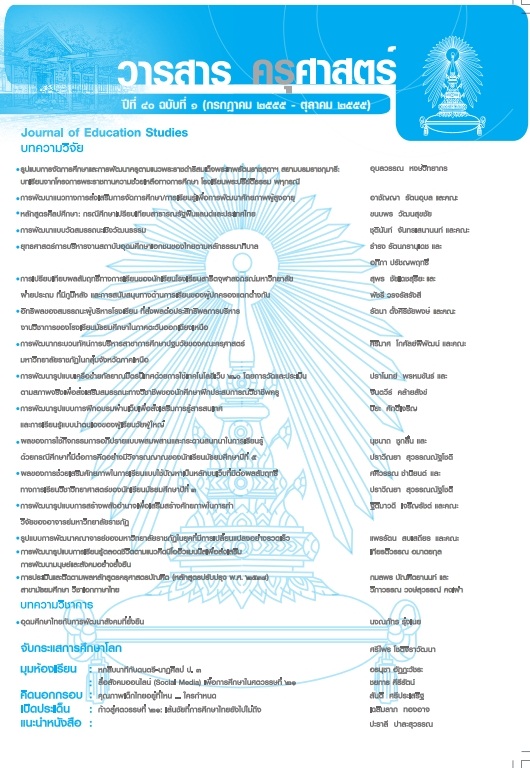หลักสูตรศิลปศึกษา : กรณีศึกษาเปรียบเทียบสาธารณรัฐฟินแลนด์ และประเทศไทย
Abstract
ปี ค.ศ.1999 ประเทศสมาชิกสหภาพยุโรป ๒๙ ประเทศ ได้ลงนามในการประกาศปฏิญญา โบโลญญ่าสำหรับพัฒนาการศึกษาให้เป็นระบบเดียวกัน และกำหนดให้พัฒนาความร่วมมือลักษณะต่างๆ เพื่อให้เกิดการพัฒนาประชากรและถ่ายโอนแรงงานระหว่างประเทศสมาชิก สาธารณรัฐฟินแลนด์เป็น สมาชิกในสหภาพที่สามารถผลิตและพัฒนาครู/อาจารย์ที่มีคุณภาพสูง ทำให้ระบบการศึกษามีคุณภาพสูง มีอัตราการอ่านออกเขียนได้ร้อยละ ๑๐๐ และเป็นแบบอย่างที่ดีในการพัฒนาการศึกษาด้านต่างๆ ศิลปศึกษาซึ่งเป็นวิชาในกลุ่มสังคมศาสตร์ที่บูรณาการศาสตร์ด้านศิลปะและการศึกษา ช่วยพัฒนา ความคิดสร้างสรรค์และเตรียมผู้เรียนให้สามารถเชื่อมโยงศิลปะบนฐานของความหลากหลายทาง วัฒนธรรมและสังคมได้ตั้งแต่การศึกษาขั้นพื้นฐานจนถึงระดับสูง เนื่องจากประเทศไทยอยู่ระหว่างการเป็น ประชาคมอาเซียนมีแนวโน้มของการเคลื่อนย้ายแรงงานฐานความรู้และการสร้างความร่วมมือ กรณีศึกษา สาธารณรัฐฟินแลนด์ เพื่อเปรียบเทียบความเคลื่อนไหวทางการศึกษา หลักสูตรศิลปศึกษาและ ความร่วมมือ จึงเป็นบทเรียนสำคัญสำหรับประเทศไทยในการผลิตและพัฒนาผู้เรียนระดับอุดมศึกษา ให้พร้อมที่จะดำรงชีวิตอยู่ในสังคมที่มีความหลากหลายทางวัฒนธรรมและเศรษฐกิจแบบสร้างสรรค์ ได้อย่าง
มีความสุข In the year 1999, 29 EU member countries entered into the Bologna Declaration whose aims are the uniformed development of a single education system; and, to initiate collaboration with citizen development and the transfer of labor among the member countries. The Republic of F inland is one of the members to produce highly eff icient teachers and lecturers who have consequently contributed to the overall high quality of their education system and 100% literacy and high performance to develop all f ields of education. Art education is a branch of social science integrated in art and education to help improve creativity and prepare the learners for further linkage of the various artistic forms on the basis of cultural and societal diversity from the basic to the highest levels. As such, Thailand is in the process of entering the ASEAN Community, which involves the transfer of education personnel, knowledge and collaboration. The case study of the Republic of F inland provides a comparative view of educational movement, art education program, and collaboration which is crucial to Thailand’s efforts in the development of higher education learners who are the best positioned to peacefully function in creative yet culturally, socially and economically diverse communities.




